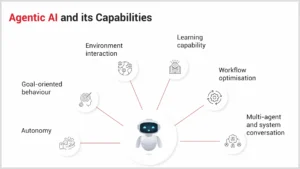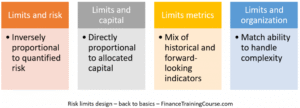NxtGen’s “M”: India’s New Open-Source, Agentic AI Platform Built to Act
Published: August 17, 2025 (Asia/Kolkata)
Executive Summary
NxtGen has unveiled “M”, a home-grown, open-source, agentic AI platform designed to convert natural-language intent into real-world actions across consumer, enterprise, and public-sector workflows. Unlike chat-first assistants, M is positioned as an action-first orchestration layer that can plan, call tools and APIs, and execute end-to-end tasks—while emphasizing sovereignty, data privacy, and multi-model openness. Early coverage highlights M’s open systems base, domestic hosting, and multi-model orchestration (e.g., Llama, DeepSeek class models) on modern GPU stacks—signaling an Indian alternative to closed platforms. Express ComputerAnalytics India MagazineTech Observernews.siliconindia.com
Table of Contents
-
Why M, Why Now?
-
What M Actually Is: A Plain-English Definition
-
Core Architecture: From Prompt to Action
-
Agentic Capabilities and Workflow Orchestration
-
Openness, Sovereignty, and Enterprise Readiness
-
Model Strategy: Multi-Model, Model-Switching, and RAG
-
Developer Experience: APIs, SDK Patterns, and Integration
-
Infrastructure: GPUs, Kubernetes/OpenShift, and Scaling
-
Security, Governance, and Compliance Posture
-
Real-World Use Cases (Consumer, Enterprise, Public Sector)
-
How M Compares: M vs. ChatGPT-style Assistants vs. DIY Stacks
-
Build Your First “M” Use Case: A Hands-On Blueprint
-
Costs, TCO Levers, and ROI Thinking
-
Risks, Limits, and What to Watch
-
Roadmap Signals and Ecosystem Opportunities
-
FAQ
-
Conclusion
1) Why M, Why Now?
Three forces converged in 2024–2025:
-
Open models are good enough for many tasks, and improving quickly. Organizations want control, portability, and cost transparency.
-
Agentic AI—systems that plan, decide, and act—moved from demos to production workflows (ticket triage, procurement, IT/Sec runbooks).
-
Sovereign AI requirements intensified: regulated data, residency laws, and supply-chain risks pushed enterprises toward domestically hosted, open architectures.
M enters precisely here: an action-first, open, sovereign platform built to run on Indian infrastructure and integrate with real tools and systems, not just chat. Express ComputerTech Observer
2) What M Actually Is: A Plain-English Definition
M is an open, agentic AI platform. Think of it as:
-
A brain (multi-model reasoning and planning),
-
A toolbelt (connectors to apps, databases, and APIs), and
-
A dispatcher (workflow engine that reliably executes steps end-to-end).
Users express intent (“Schedule the CAB meeting and circulate minutes”), and M turns that into an action plan, chooses the right model(s), calls the right tools, and executes—with guardrails and auditability. Reports describe M explicitly as “built to act” rather than just converse, with multi-model flexibility and enterprise/public-sector applicability. Express ComputerAnalytics India Magazine
3) Core Architecture: From Prompt to Action
While NxtGen hasn’t publicly released full technical docs, coverage of the launch paints a consistent, modern architecture:
-
Intent Understanding & Planning
-
Ingests user instructions (text/voice).
-
Uses planner agents to break intent into steps.
-
Selects model(s) based on task type and constraints (latency, cost, precision). Analytics India Magazine
-
-
Tool/Workflow Orchestration
-
Calls enterprise tools/APIs: calendars, ticketing, ERP/CRM, HRMS, payments, RPA bots.
-
Maintains state, handles retries/timeouts, observes tool feedback, and re-plans if needed. Express Computer
-
-
Model Layer (Multi-Model)
-
Works with open models (e.g., Llama family, DeepSeek class models) and can switch to optimize cost/quality.
-
Likely supports RAG over enterprise data for grounded responses. yugma.aiAnalytics India Magazine
-
-
Execution, Verification & Logging
-
Runs steps, validates outputs (schema, business rules), logs everything for audit/compliance.
-
Surfaces human-in-the-loop points when confidence is low.
-
-
Hosting & Sovereignty
-
Hosted on NxtGen’s domestic AI infrastructure with open systems and modern GPUs, aligning with data residency and privacy expectations. Express ComputerTech Observer
-
4) Agentic Capabilities and Workflow Orchestration
Agentic means M can:
-
Plan multi-step tasks (e.g., “Consolidate Q2 invoices, raise POs, and notify vendors”).
-
Reason about tool sequences (search → fetch → transform → validate → post).
-
Call tools with structured inputs/outputs and self-correct.
-
Escalate to humans with explainable context (why it paused, what it needs).
Reports emphasize workflow-driven processes—going beyond chat to trigger business processes and execute everyday tasks like booking appointments or ordering services. Tech ObserverAnalytics India Magazine
5) Openness, Sovereignty, and Enterprise Readiness
M’s positioning revolves around three pillars:
-
Open Systems, Open Models: portability, vendor leverage, and inspectability. Express Computer
-
Sovereign Hosting: runs on Indian infrastructure, addressing data residency and supply-chain concerns. Tech Observer
-
Enterprise Grade: workflows, connectors, monitoring, access control, and audit trails needed for regulated industries. Express Computer
This triad differentiates M from purely closed, cloud-locked assistants.
6) Model Strategy: Multi-Model, Model-Switching, and RAG
Coverage notes that M can “switch between AI models and tools”—a policy-driven approach where tasks are routed to the best-fit model for the job (e.g., fast small model for classification; larger model for reasoning; function-calling-friendly model for tool use). yugma.ai
Typical ingredients you should expect:
-
Model Registry & Policies (quality, latency, cost caps, PII sensitivity).
-
RAG Layer over enterprise content (indexes, vector stores, metadata filters).
-
Function/Tool Calling to enforce structured I/O.
-
Eval & Telemetry to measure output quality by use case.
While specifics remain undisclosed, the public framing implies multi-model orchestration and agentic planning at the core. genaigazette.com
7) Developer Experience: APIs, SDK Patterns, and Integration
Though SDK docs aren’t public yet, action-first platforms like M typically provide:
-
Universal Intent API:
POST /intentwith context, goals, constraints, and allowed tools. -
Tool Adapter Framework: adapters for REST/SOAP, GraphQL, gRPC, SQL, RPA bots, and SaaS connectors (O365, Google Workspace, ServiceNow, SAP, Salesforce, Freshworks).
-
Events & Webhooks: stream intermediate steps, human-approval checkpoints, and completions.
-
Policy as Code: YAML/JSON for guardrails, PII handling, and escalation rules.
-
Observability: traces per step, model calls, costs, and evaluation metrics.
Media reports call out real-world action and enterprise workflows, which implies a developer platform rather than a mere chatbot UI. Express ComputerAnalytics India Magazine
8) Infrastructure: GPUs, Kubernetes/OpenShift, and Scaling
NxtGen publicly highlights AI compute that unifies NVIDIA, AMD, and Intel GPUs on Red Hat OpenShift for enterprise-grade production. That ecosystem—paired with NVIDIA H-class accelerators reported in launch coverage—suggests that M runs on a modern, containerized GPU fabric with scheduling, isolation, and autoscaling. nxtgen.comnews.siliconindia.com
What that means for you:
-
Capacity on demand: burst for training/fine-tuning or high-volume inference.
-
Portable workloads: open systems reduce lock-in.
-
Better cost control: right-size models, batch windows, and quantization.
9) Security, Governance, and Compliance Posture
Enterprises will assess M against:
-
Identity & Access: SSO/OIDC, SCIM, scoped tokens for tools.
-
Data Protection: at-rest/in-transit encryption; VPC-isolation; data residency on Indian soil.
-
Guardrails & Red Teaming: prompt injection defenses, output filters, watermarking where relevant.
-
Auditability: step-level logs; explainability of plans and tool calls.
-
Compliance: ISO 27001/27701, SOC 2, HIPAA (health), RBI/IRDAI (FS), MeitY advisories for government projects (as applicable).
The sovereign, open narrative and domestic hosting are key trust signals for regulated buyers. Tech Observer
10) Real-World Use Cases
Consumer & Prosumer
-
Smart concierge: book doctor appointments, movie tickets, or local services from a single prompt.
-
Travel & errands: compare routes, file expense claims, schedule pickups.
-
Digital public services: locate government forms, pre-fill data, schedule visits.
Coverage explicitly lists such everyday actions as launch examples. Analytics India Magazine
Enterprise IT & Operations
-
L1/L2 support: triage incidents, run diagnostics, apply safe runbooks, log outcomes.
-
DevOps: open tickets, roll back releases, rotate keys on policy breaches.
-
Data ops: run SQL transforms, validate dashboards, annotate anomalies.
Finance, HR, and Procurement
-
Invoice processing with policy checks; PO generation via ERP APIs.
-
Recruiting: schedule interviews, summarize CVs with RAG over talent pools.
-
Spend controls: enforce approval chains and budget thresholds.
Public Sector & Utilities
-
Citizen request routing with status updates.
-
Field ops: assign crews, generate reports, reconcile inventory.
By combining planning + tool use + workflow, M targets the “last mile” of AI—acting on insights, not just producing text. Express Computer
11) How M Compares
| Criterion | M (Open, Agentic, Sovereign) | Chat-First Closed Assistants | DIY Open-Source Stack |
|---|---|---|---|
| Openness | Built on open systems; model choice | Usually closed models & infra | Fully open, but you stitch everything |
| Action Orientation | Workflow-first, tool orchestration | Often chat-first, tool use varies | Whatever you assemble |
| Data Residency | Domestic hosting options | Generally global cloud regions | Your choice; heavy lift |
| Time-to-Value | Prebuilt connectors + guardrails | Quick for chat; less for action | Slower; engineering overhead |
| Cost Control | Model switching, on-prem/sovereign infra | Opaque pricing, lock-in risk | You control, but higher ops burden |
| Governance | Enterprise auditability implied | Varies by vendor | You build it |
M’s pitch is a pragmatic middle: open and sovereign like DIY, but productized like chat platforms—optimized for doing work, not just talking. Express ComputerTech Observer
12) Build Your First “M” Use Case: A Hands-On Blueprint
Goal: “When a high-priority ticket arrives after hours, diagnose, apply a safe fix if confidence ≥ 0.85, otherwise escalate with context.”
Step 1 — Define Policies
-
Confidence threshold: 0.85 for auto-fix; else page on-call.
-
Allowed tools: issue tracker API, runbook executor, log fetcher.
-
PII masking: enabled for logs.
Step 2 — Register Tools
-
tool_issueTracker.search/create/update -
tool_runbook.execute(name, args) -
tool_logs.query(service, since)
Step 3 — Provide Knowledge
-
RAG index: runbooks, service maps, known incidents, changelogs.
Step 4 — Create an Intent Template
{
"goal": "Auto-handle P1 tickets after hours",
"inputs": {"ticket_id": "<id>"},
"constraints": {
"maxRuntime": "10m",
"guardrails": ["no-prod-db-writes", "read-only until approval"]
},
"approval": {"onConfidenceBelow": 0.85, "route": "oncall@company"}
}
Step 5 — Observe & Improve
-
Track MTTR, auto-resolution rate, false-positive escalations, cost per ticket.
-
Add new tools (feature flag toggler, rollback, health checks) as confidence grows.
This is the kind of closed-loop, measurable automation M is built to deliver.
13) Costs, TCO Levers, and ROI Thinking
-
Right-size models per step (classification vs. deep reasoning).
-
Batch and cache: plan summaries, retrieval caches.
-
Use domain prompts: reduce token waste and errors.
-
Exploit sovereign infra: predictable costs and data localization benefits.
-
Automate guardrails: reduce human approvals for low-risk paths.
Reports emphasize that M can switch models and operates on high-performance domestic infrastructure, both levers for cost and latency. yugma.ainews.siliconindia.com
14) Risks, Limits, and What to Watch
-
Tool Misuse & Prompt Injection: needs strict scoping; test with adversarial prompts.
-
Model Drift: re-eval model choices quarterly; maintain eval suites.
-
Data Quality: RAG is only as good as your content hygiene.
-
Change Management: build explainability and opt-outs to drive trust.
-
Compliance: align escalation paths to regulatory obligations (RBI, HIPAA, etc.).
M’s auditability and sovereign hosting help, but governance practices remain decisive. Tech Observer
15) Roadmap Signals and Ecosystem Opportunities
Media and social posts around the launch hint at:
-
Ecosystem invites: NxtGen encourages organizations to bring use cases and collaborate. Entrepreneur
-
Model diversity: ongoing support for multiple open models (e.g., Llama family, DeepSeek class). genaigazette.comnews.siliconindia.com
-
Events & Demos: community showcases and CIO forums signal momentum. LinkedIn
Opportunities for builders:
-
Publish tool adapters (ERP, fintech rails, telecom OSS/BSS).
-
Domain packs: healthcare coding, BFSI risk checks, gov service workflows.
-
Eval kits for verticals (SLAs, compliance, safety tests).
16) Frequently Asked Questions
Q1. Is M truly open source?
Launch coverage describes M as built entirely on open systems and leveraging open-source models, with a strong sovereignty posture. As with many platforms, individual repos/licenses may vary—watch for official Git repositories and licenses as NxtGen publishes them. Express ComputerTech Observer
Q2. What models does M support?
Reports reference Llama and DeepSeek-class models and emphasize model switching/orchestration rather than a single default LLM. Exact model versions and fine-tunes can evolve. yugma.aiAnalytics India Magazine
Q3. Can M run on-prem?
The sovereign positioning and NxtGen’s AI compute footprint suggest flexible hosting on domestic infrastructure, potentially including dedicated/isolated environments for regulated customers. Engage NxtGen for deployment options. nxtgen.com
Q4. How is M different from a typical chatbot?
M is action-first: it plans, calls tools, and executes workflows, not just responds with text. It aims to close the loop from intent → action → verification. Express Computer
Q5. What about privacy and compliance?
The domestic hosting and open systems narrative supports data residency and auditability requirements. You should still perform a standard security and compliance review for your sector. Tech Observer
17) Conclusion
M arrives at a pivotal moment: enterprises want the power of agentic AI without ceding control over data, models, and costs. By combining open systems, sovereign hosting, and workflow-centric orchestration, NxtGen positions M as a practical engine for real-world work—from booking an appointment to closing a financial period. If you’ve been waiting for action-oriented AI that respects openness and sovereignty, M is worth a serious pilot.
Next steps for teams:
-
Identify one high-value, low-risk workflow (clear rules, measurable outcome).
-
Curate the golden knowledge base (RAG) for that flow.
-
Define tools and guardrails, then run a 30-day pilot with success metrics (time saved, accuracy, cost).
-
Scale horizontally to adjacent processes and enrich with evals and telemetry.
Sources & Further Reading
-
Express Computer – NxtGen unveils “M”: open agentic AI platform built to act and scale (published ~August 2025). Express Computer
-
Analytics India Magazine – NxtGen Launches ‘M’, India’s Open AI Platform for Real-World Actions (published ~August 2025). Analytics India Magazine
-
Entrepreneur India – NxtGen Launches Indigenous Open Source-Based Agentic AI Platform (Aug 8, 2025). Entrepreneur
-
Economic Times (AI Insights) – NxtGen unveils ‘M’… (published within the last few days). The Economic Times
-
TechObserver – NxtGen launches sovereign open agentic AI platform (August 2025). Tech Observer
-
NxtGen – Artificial Intelligence at NxtGen (AI compute and OpenShift reference). nxtgen.com
-
SiliconIndia – NxtGen unveils ‘M’, open-source agentic AI platform… (August 2025). news.siliconindia.com
-
Genaigazette – NxtGen M brings GenAI to real-world workflows (round-up). genaigazette.com
-
YUGMA – NxtGen launches ‘M’… can switch between Llama and DeepSeek (summary). yugma.ai
Author’s Note
This article synthesizes publicly available reporting as of August 17, 2025 (IST). As NxtGen releases official documentation, SDKs, and repositories, details (APIs, licenses, supported models) may evolve. For production decisions, consult the vendor’s latest technical materials.
https://bitsofall.com/https-yourwebsite-com-huaweis-ai-container-platform-architecture-capabilities/
Google’s AI Advancements: How Gemini, DeepMind, and Cloud Are Re-shaping the Future








